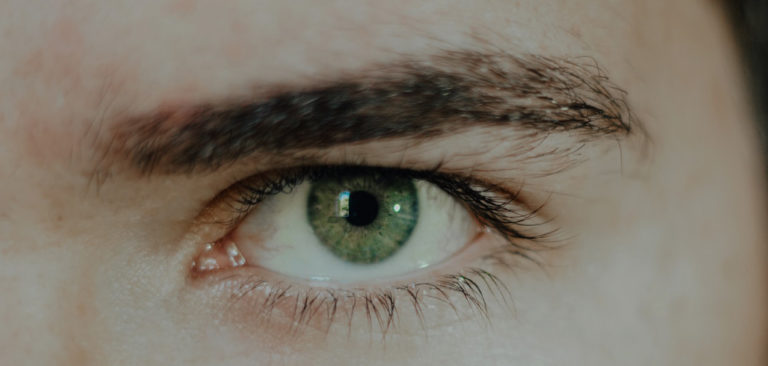Keratopigmentation, a procedure aimed at altering the color of the eye’s cornea, has gained traction in recent years for both medical and cosmetic reasons. Whether it’s to address vision impairments, enhance aesthetics, or fulfill a personal desire for a particular eye color, individuals are increasingly exploring this innovative technique.
However, one crucial aspect that often dictates decision-making is the cost associated with keratopigmentation. This article delves into the factors that influence the cost, potential complications, and the role of skilled ophthalmologists in ensuring successful outcomes.
What is Keratopigmentation?
Keratopigmentation, commonly referred to as corneal eye tattooing or an eye color change procedure, is a specialized cosmetic treatment aimed at altering the natural color of the eyes. This color change operation involves introducing natural pigments or color pigment particles into the cornea to achieve the desired eye colors.
There are several techniques used in keratopigmentation procedures, including:
- Corneal tattooing: A traditional method where pigments are deposited on or within the corneal tissue.
- Iris implants: A surgical procedure involving the placement of an artificial implant to alter the eye’s appearance.
- Laser-assisted color change surgery: Advanced techniques such as laser depigmentation or femtosecond laser application to modify the natural pigment of the iris or cornea.
Dr. Ferrari’s Annular Keratopigmentation Method
- Anesthesia and Duration: The procedure is painless and brief, typically lasting around one hour. It is performed under local anesthesia, ensuring patient comfort throughout the operation.
- Surgical Technique: Annular keratopigmentation, spearheaded by Dr. Ferrari is the method that is used, and involves a controlled operation. It begins with the creation of a circular micro-tunnel in the cornea using a specialized femtosecond laser.
- Pigment Application: Following the creation of the micro intracorneal tunnel, pigment is meticulously applied to cover the natural color of the eyes, thereby achieving the desired color change.
- Preservation of Eye Structure: Importantly, the surgery does not impact the internal structures of the eye. Unlike some other methods, it does not involve the use of eye implants, contributing to its safety and efficacy.
- Safety Measures: Surgeons on the Neoris platform emphasizes safety through three key rules of caution:
- The procedure necessitates the use of a specialized femtosecond laser, specifically adapted and programmed for this purpose.
- Surgeons must employ this critical instrument to execute highly precise surgical movements, ensuring accuracy and effectiveness.
- Only Neoris dyes are utilized, currently including blue, green, brown, and white, to achieve optimal and reliable results. Neoris dyes are the only dyes in the market developed specifically for keratopigmentation.
Find out more about the keratopigmentation technique
How Much Does Keratopigmentation Cost?
The cost of keratopigmentation varies depending on several primary factors, including the skilled ophthalmologist’s expertise, the eye clinic’s location, and the eye color change surgery price associated with the chosen color change procedure. On average, the procedure cost ranges from $6,500 to $12,000, but additional expenses, such as laser treatment, diagnostic testing, or required medical necessities, can increase the keratopigmentation surgery cost.
For patients seeking safe eye color change, consulting certified clinics ensures access to qualified ophthalmologists who specialize in keratopigmentation procedures and the use of specialized color pigment options for eye color alteration. During consultations, patients should inquire about the average cost, potential additional costs, and the special pigment used for creating a permanent eye color change in a range of colors tailored to their preferences.
5 Factors That Affect The Cost of Keratopigmentation
Various factors influence the cost of color change surgery. Average prices vary depending on primary factors like the surgeon’s expertise, the application process, and the chosen color-change technique. Additional factors such as clinic location and necessary treatments also impact the overall cost. The average cost of keratopigmentation can fluctuate depending on the following factors:
Surgeon Expertise
A skilled ophthalmologist with experience in performing aesthetic procedures like keratopigmentation procedures or eye implants often charges higher fees. While opting for a professional specializing in eye pigments and safe eye color alteration may be more expensive, it minimizes risks such as vision loss or potential complications like allergic reactions or reduced vision. Patients should seek out surgeons who specialize in eye pigments and have a reputation for achieving satisfactory outcomes, even if it means paying a premium for their expertise.
Type of Procedure
The chosen method for keratopigmentation can significantly impact the overall cost of the procedure. While traditional techniques like corneal tattooing may be more affordable, advanced methods such as femtosecond laser-assisted keratopigmentation may come with a higher price tag due to the use of specialized equipment and technology. Patients should discuss the available options with their surgeon to determine the most suitable and cost-effective approach for their specific needs.
Clinic Location
The cost of living in the geographical location of the eye clinic impacts the cost of keratopigmentation. Clinics in urban regions with higher administrative overhead typically charge more than those in rural areas. Factors such as staff salaries, facility maintenance, and location desirability influence the final procedure cost.
Additional Treatments
In some cases, additional treatments may be necessary before or after keratopigmentation, depending on the individual’s eye health and specific requirements. For example, eye drops might be necessary for the healing process. Additional procedures and post-operative care can add to the overall cost of the treatment. Patients should factor in these potential additional expenses when budgeting for keratopigmentation and discuss them with their surgeon during the consultation process.
Equipment and Technology
The use of advanced equipment, including femtosecond lasers or tools for creating a corneal tunnel, enhances precision but also raises costs. Modern keratopigmentation procedures rely on natural pigments or special pigment particles to achieve long-lasting results, ensuring the permanent color of your choice while safeguarding against issues like color fading or compromising the natural eye color.
The Benefits of Keratopigmentation
Opting for keratopigmentation procedures is a popular aesthetic procedure for those seeking permanent eye color change for cosmetic purposes or medical categories like corneal dystrophy. By altering the underlying color of the iris with natural pigments or special pigment particles, this cosmetic treatment provides a range of colors, from eyes blue to shades matching the patient’s natural pigment.
Additional Benefits Include:
- Enhanced appearance for aesthetic reasons.
- Restoration of eye health for medical procedures or surgical procedures.
- Minimal risks when performed by a skilled ophthalmologist.
While the cost of keratopigmentation can be substantial, prioritizing safety and expertise ensures optimal results, reducing risks like retinal detachment, color fading, or vision loss. Whether for cosmetic reasons or medical purposes, the color change procedures offer a reliable option for achieving the desired look.
Is Keratopigmentation Covered By Insurance?
The cost of keratopigmentation is not covered by insurance policies as it is considered an aesthetic procedure and not a medical necessity. Since individuals who seek a change in eye color do so for aesthetic reasons and not medical reasons, insurance providers don’t cover the cost of cosmetic eye color change surgery. However, your surgeon may be willing to create a financial plan to help you cover the cost of surgery.
Before and After Pictures of Keratopigmentation
Is Keratopigmentation Safe?
Keratopigmentation is safe when performed by a skilled surgeon. Surgeons on the Neoris platform have performed more than THREE thousand operations, which represents nearly 90% of the operations performed worldwide so you can rest assured that you’re in good hands.
While the cosmetic procedure for permanent eye color change has a bad reputation in ophthalmology, this is because the two most popular methods of permanent color change are colored implants and laser depigmentation of the iris. Colored implants, similar to permanent contact lenses, are dangerous and can lead to vision loss, and laser eye color change through depigmentation can lead to complications such as glaucoma.
To avoid these risks, Dr. Ferrari has developed a new, safe eye color change procedure that minimizes the potential risks outlined above. To avoid vision loss or intraocular complications, surgeons on the Neoris platform make a circular micro-tunnel in the cornea with a femtosecond laser, enabling them to apply a special pigment that covers your natural color, this controlled color-change procedure presenting a safe alternative.
Are Colored Contact Lenses A Viable Alternative?
Colored contact lenses offer a temporary solution for individuals considering eye color alteration. They provide flexibility and convenience, ideal for those exploring different eye colors before committing to keratopigmentation. With options ranging from brown pigment to green color, contact lenses allow for experimentation without permanence.
However, for lasting results without the hassle of upkeep, keratopigmentation is the ultimate solution. This cosmetic surgery offers precise pigment selection, ensuring patient satisfaction with their chosen eye color. While colored contact lenses serve as a viable alternative, those seeking a permanent change will find keratopigmentation to be the ideal choice.
Find a keratopigmentation clinic near you
How To Find The Best Surgeon For Your Keratopigmentation Procedure
Selecting a skilled and experienced ophthalmologist is paramount to ensure a successful keratopigmentation procedure. Factors to consider when choosing a surgeon include:
- Qualifications and Training: Look for ophthalmologists with specialized training in corneal procedures and a residency in ophthalmology. Surgeons with decades of experience in refractive surgery and eye pigments are preferable.
- Track Record: Research the surgeon’s previous cases and patient outcomes to gauge their success rate and reputation in the field.
- Consultation Process: Schedule an initial consultation with the surgeon to discuss the procedure, potential risks, and expected outcomes. A reputable surgeon will provide a comprehensive assessment and accurate price quote based on individual needs.
Keratopigmentation Pre and Post Operation Information
How to Properly Prepare for the Surgery
- Take a shower and wash your hair: Do this on the day of the surgery to ensure the surgical environment is as clean as possible.
- Wear clean and comfortable clothes: This helps maintain a hygienic environment and ensures your comfort.
- Come without makeup or face powder: This minimizes the risk of contamination during the surgery.
- Remove your fake eyelashes: If you wear them, take them off before the procedure.
- Have a light lunch: Eat something light before the surgery.
- Do not wear contact lenses: Avoid wearing them on the day of the surgery.
After the Surgery
- Blurred vision: Your vision will be slightly blurred for a few hours post-surgery.
- Use prescribed eye drops: Start applying the drops (which will be prescribed on the morning of the operation) 2 hours after the surgery.
- Wear sunglasses: Protect your eyes by wearing sunglasses when you go outside.
- Accompaniment: It is advisable to come accompanied, but if you are alone, you will be able to see well enough to take a taxi or walk back to the hotel.
- Smoking: It is allowed to smoke after the operation.
- Alcohol consumption: You may consume alcohol after the operation unless you are taking the “Izalgi” painkiller prescribed on the morning of the surgery.
- Showering and hair washing: Wait 2 days before taking a shower and washing your hair. Taking a bath is allowed.
- Corrective lenses: Wait 2 weeks before wearing corrective lenses.
- Swimming: Avoid going to the pool for 2 weeks.
- Sports: Wait 3 days before resuming sports activities.
- Traveling and flying: You will be able to travel and fly the day after the procedure.
- Driving: It is strongly recommended not to drive during the hours following the procedure.
Keratopigmentation Services
The surgeons on the Neoris platform are ophthalmic surgery professionals, renowned worldwide for their unrivalled expertise. With a team based in clinics around the world, they have successfully performed thousands of keratopigmentation operations. This remarkable achievement accounts for almost 90% of all such procedures performed worldwide.






